Starting my career in political communication taught me a lot, but one of the most important lessons was this: Know, and never underestimate, your audience. It’s easier said than done.
After my pivot into the software world, I’ve experienced firsthand how challenging it can be to explain a complex technology in accessible language or reach a niche buyer audience. Good software marketing is hard, but excellent marketing is extremely hard—to explain, to implement and to scale.
I’ve been thinking about this a lot lately, especially after my younger brother founded his own startup, a journey that has inspired some interesting conversations between us about brand and perception in the technology industry. In one such conversation, he raved about PostHog, an open-source software company that creates product and data tools.
PostHog helps customers (like my brother’s company) understand who is using their product and how, providing important insight into user behavior and preference. Understanding your audience is clearly central to the PostHog product roadmap, but it’s also core to the company’s brand. And their brand is truly unlike anything I’ve observed in the software industry to date.
Let me explain, because brand is one of those words that can be easy to sneer at, like “synergy” or “disruptive.” Brand too often becomes the junk drawer of a company’s identity—its reputation, its products, its market positioning, how it appeals to customers, how it appeals to prospective employees and beyond. But a real brand, one with staying power and resonance, is thoughtful and intentional and real. It takes effort. It makes people care.
For many SaaS companies, where marketing is increasingly managed by dashboard KPIs that are levels removed from an actual customer, brands have become depersonalized and mass-produced: logos splayed across billboards on the highway to the SFO airport, on water bottles or pens at a conference or in thousands (even millions) of dollars’ worth of digital ads. These brands explain too much to too many, and therefore, they mean nothing at all.
And as AI tools become more ubiquitous, with copy written by algorithm and cold email dumps lightly personalized and sprayed out to the masses, I fear these brands will be stretched to the limits of what customers (and spam filters) will tolerate.
But PostHog is different. PostHog marketing is so excellent, I took pages of notes scrolling through their website and social media feeds.
The PostHog brand distills exactly what matters to their customer audience and strips everything else away. And it’s working. Most viable SaaS startups hope to recover the cost of acquiring a customer — known as a customer acquisition cost (CAC) payback — in a matter of months to years. PostHog does so in just five days, a true testament to their efficiency and how well-informed and satisfied their customers are.
And so, without further ado, here’s what I love (and what you should know) about PostHog marketing:
They’re transparent.
From the company’s original 2020 launch post on Hacker News to now, the PostHog team has sought external feedback from their ideal customer profile (ICP): involving them closely in the growth and development of the company.
PostHog’s website is a masterclass in customer engagement and transparency. They’ve clearly invested significant resources (time, thought and money) into making their website a welcoming and informative hub for their customers. Today, any visitor to posthog.com can read the company’s handbook: an interactive and continually updated guide to the company’s history, how the products work, why they’ve discontinued products, how the company makes money and more, written with refreshing candor.
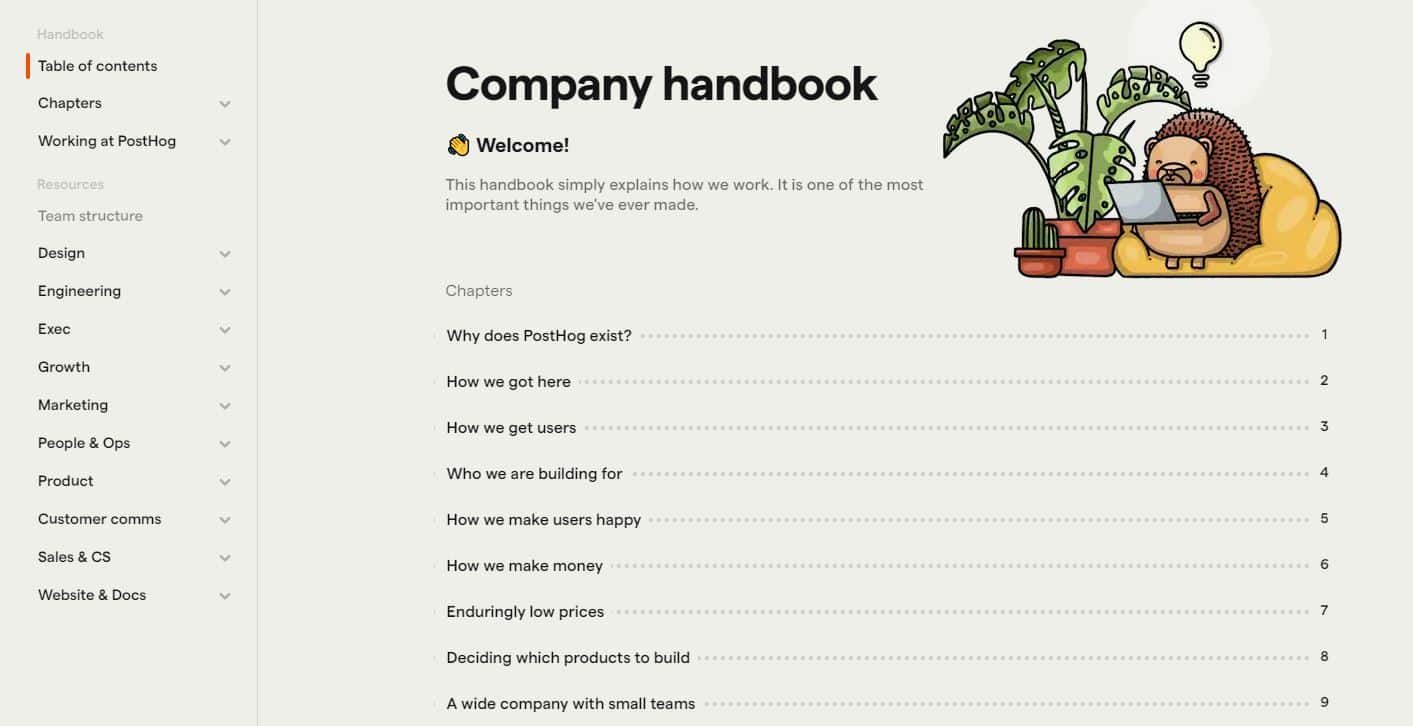
In the handbook, PostHog allows visitors to ask questions on each page about anything—its products, the company’s growth plans, pricing etc. This level of transparency and accessibility is unusual, coming at a time when many companies have outsourced customer engagement to chatbots or impersonal FAQ pages. But it’s also emblematic of the company’s values, which they spell out in the Marketing section of the handbook.
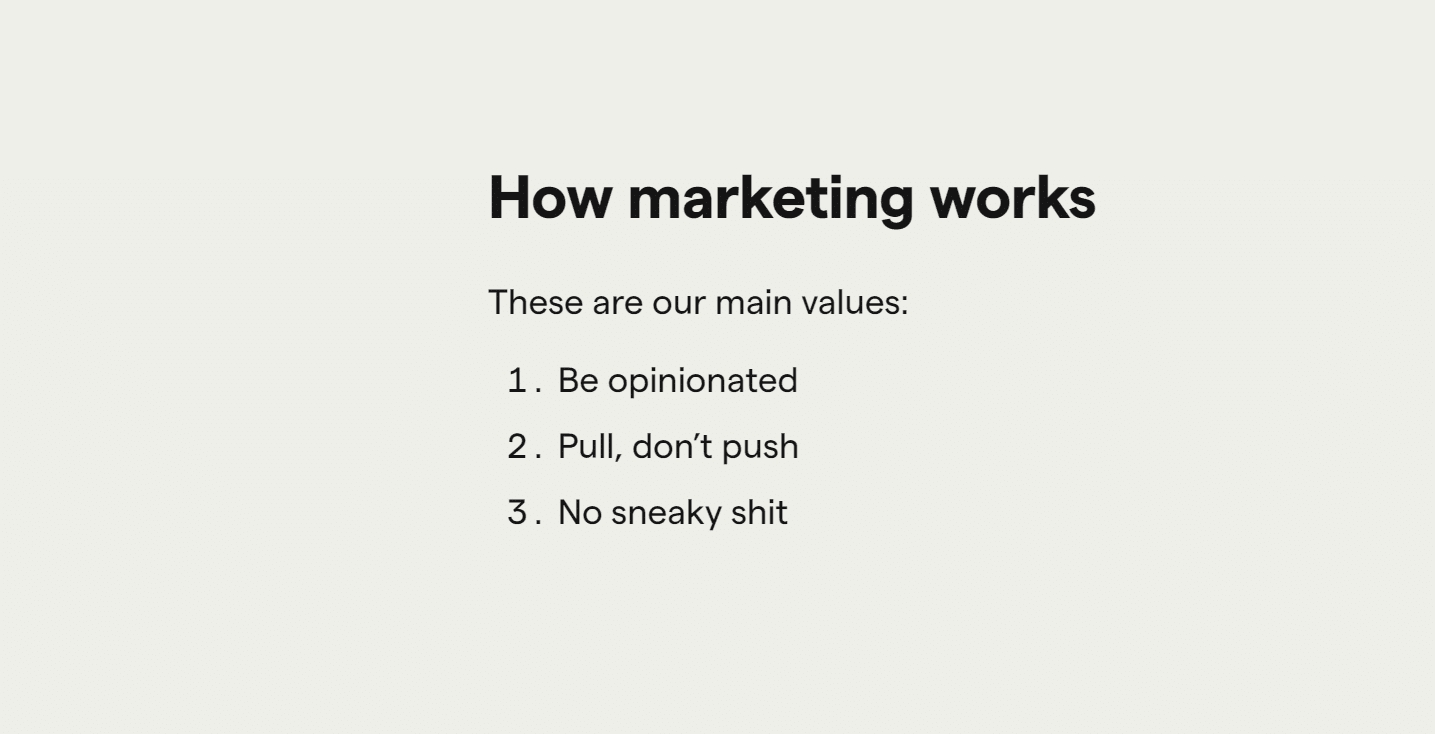
The last two lines in the “No sneaky shit” section of the handbook’s marketing overview provide an excellent summarization of what I love about the PostHog approach to brand.
“Don’t pretend our customers are different from us–i.e. more gullible, more susceptible to marketing. We are an engineering-led team building products for other engineers. If you wouldn’t like it, assume our customers wouldn’t either.”
They’re consistent.
Consistency, meaning an alignment of the company’s values, beliefs and behaviors, prevails in PostHog’s effort to cultivate brand. By clearly defining the audience for marketing content – founders, product engineers, existing users and B2B SaaS companies, and by working carefully to determine which kinds of content will most resonate with those people, PostHog is consistent in its message.
But we can see consistency in other, more unusual places. Something I was surprised to see is that 100% of PostHog employees write code. The entire team, marketing included, has developer experience and knows what it’s like to build software, illustrative of their team’s conviction to understand their customers.
True to their roots as an open-source company, too, PostHog builds the marketing function in public. The team discusses plans to create hub pages, experimentation on social media platforms and paid advertising strategy and more openly on GitHub.

The consistently top-down nature of PostHog marketing is also striking. The CEO, James Hawkins, not only is deeply involved in the company’s social channels, but he himself is an open book. On the PostHog website, for example, he responds to user questions – personal and professional – and shares a list of his personal quirks, values and responsibilities.
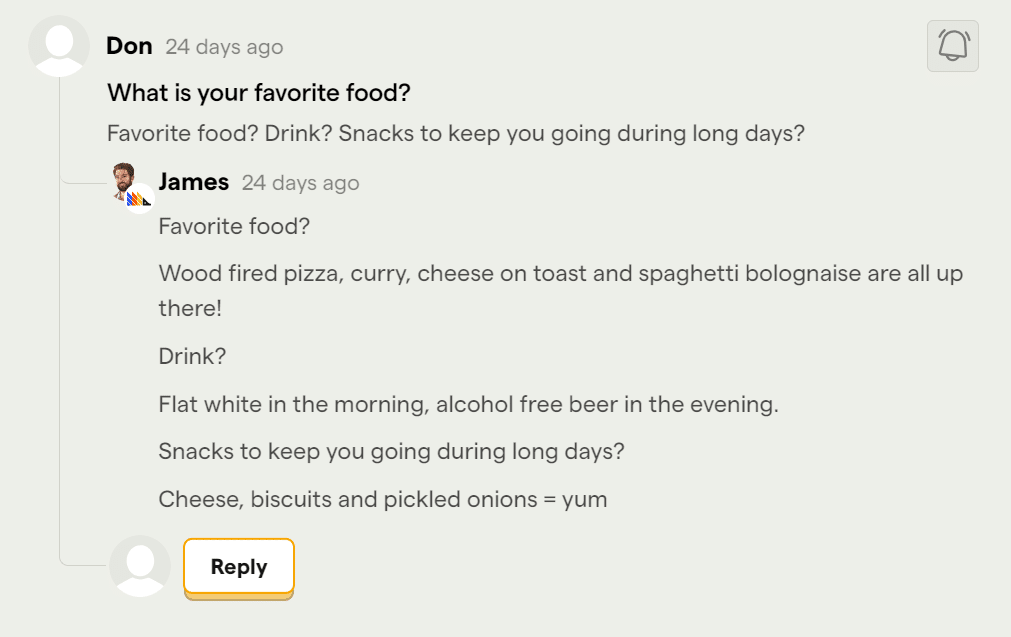
James regularly posts on Twitter/X updates on the company, memes, even offers to take PostHog users out for noodles in exchange for live feedback on their experience using the platform. His brand, inextricably linked to PostHog’s, is deeply and consistently authentic.
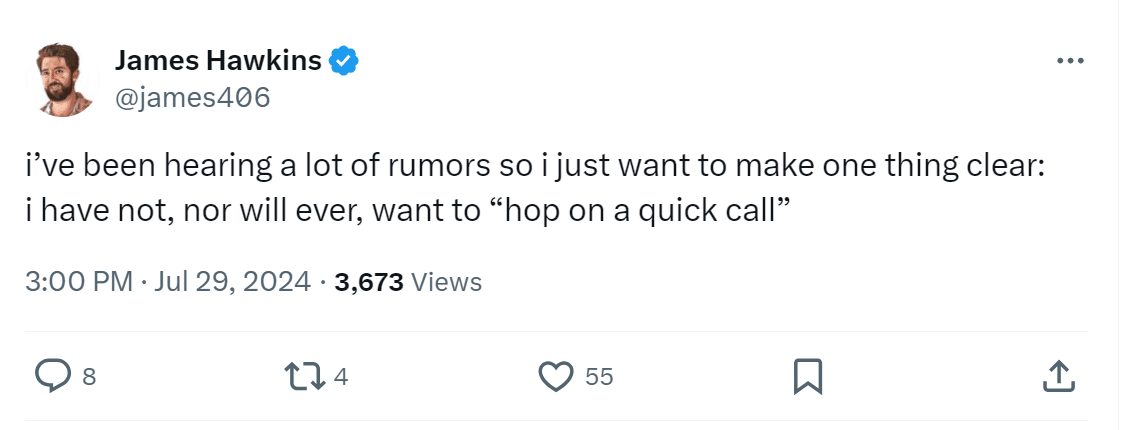
They’re a little weird.
Full disclosure, I’m also a little weird. Given what I know about folks building software, my brother included, it would stand to reason that many PostHog customers are, too. So, I think the company is right on point by sharing their collective weirdness with the world. We are starved for authenticity!
‘Marketing-speak’ has a negative connotation for good reasons. All too often, marketing teams and company leadership are hesitant to deviate away from neutral, broadly accessible branding for fear of alienating prospective buyers or distracting from the product itself. But it may be holding you back, particularly among younger generations.
The company’s distinctive hedgehog branding, prominently displayed on its social graphics, its website and its explainer videos, is one such example of welcome weirdness. You recognize PostHog content when you see it in your feed. And from what I can tell from the company’s engagement — likes, comments and reach on Twitter/X—people enjoy seeing it, too.
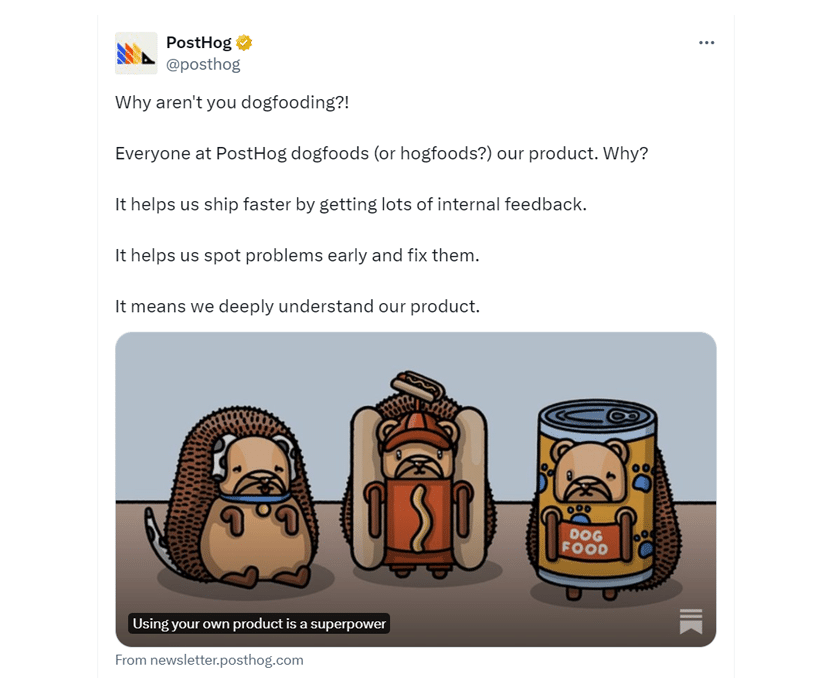
Personal and creative touches abound in PostHog marketing. On the dedicated landing page for the company’s infrastructure team, for example, visitors are greeted by a button to register for updates on projects the team is building, in addition to a list of Slack emojis created by the team and their individual perspective on whether pineapple belongs on pizza.
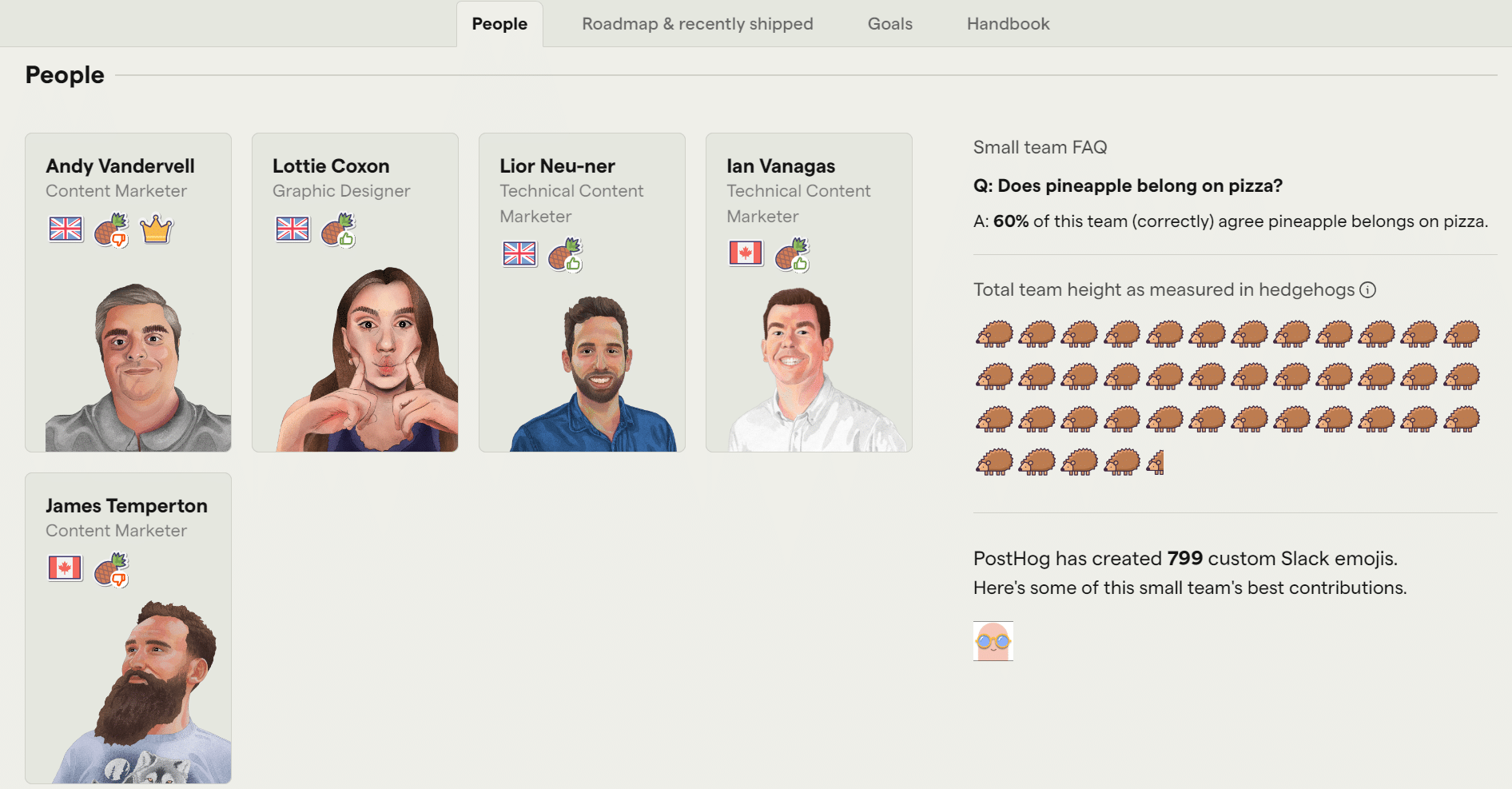
As one of the most prolific users of Slack on the global Battery team, I appreciate the enthusiasm for custom emojis. But most of all, I appreciate the dedication to their philosophy about being a little weird in public, again explained in the handbook:
“It’s ok to have a sense of humor. We are more likely to die because we are forgettable, not because we made a lame joke once. We have a very distinctive and weird company culture, and we should share that with customers instead of putting on a fake corporate persona when we talk to them.” Amen to that.
In conclusion…
Building a quality brand is difficult and a little scary, especially when you’re swimming against the tide of what everyone else is doing. What PostHog has done—the hard work of distilling their marketing, what they put out into the world, into exactly who they are and what their customers need—is something to admire.
I see PostHog marketing as the gold standard for a modern brand: authentic, consistent, weird and wonderful. I look forward to continuing to learn from them.
The information contained herein is based solely on the opinion of Megan O’Leary and nothing should be construed as investment advice. This material is provided for informational purposes, and it is not, and may not be relied on in any manner as, legal, tax or investment advice or as an offer to sell or a solicitation of an offer to buy an interest in any fund or investment vehicle managed by Battery Ventures or any other Battery entity. The views expressed here are solely those of the author.
The information above may contain projections or other forward-looking statements regarding future events or expectations. Predictions, opinions and other information discussed in this publication are subject to change continually and without notice of any kind and may no longer be true after the date indicated. Battery Ventures assumes no duty to and does not undertake to update forward-looking statements.


A monthly newsletter to share new ideas, insights and introductions to help entrepreneurs grow their businesses.





